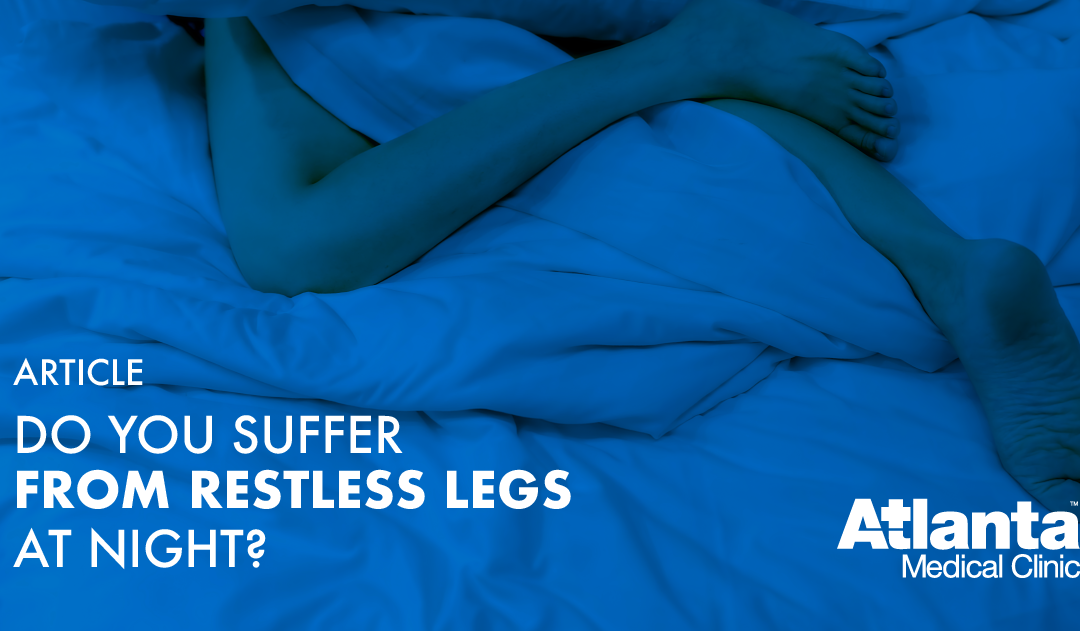For millions of Americans, nightfall brings on the anxiety of another night’s sleep lost to restlessness, and it’s not just a racing mind keeping them awake. RLS, or Restless Leg Syndrome, is just that, a neurological disorder that creates the irresistible urge to move the legs (and sometimes the arms) to relieve uncomfortable sensations like itching, pins and needles, or a crawling sort of sensation in the extremities. While there is no exact cause or specific cure, researchers are seeing undeniable correlations between RLS and CVI, or Chronic Venous Insufficiency. How might these two conditions be connected and what treatments could prove effective for both?
Restless Leg Issues
A 2003 study published in the Archives of Internal Medicine reported that up to 9-15% of the 40 million Americans that report chronic sleep disorders may experience the qualifying symptoms of Restless Leg Syndrome:
- Unpleasant sensations in the legs cause the urge to move them
- Symptoms must be aggravated by rest
- Symptoms must be alleviated by movement, especially walking, and
- Symptoms must be worst in the evening or overnight
There are many factors that could contribute to the condition, including nutritional deficiencies like iron or magnesium, kidney failure, Parkinson’s, diabetes and peripheral neuropathy. While many doctors don’t feel there’s an exact cause for the condition, they can agree on the fact that there is connection between the over-sensitive activity in the peripheral nerves and impaired circulation in the limbs.
How does Chronic Venous Insufficiency Connect?
After blood makes its way through the arteries of circulatory system to the extremities, a system of veins is supposed to guide the flow back upward from the legs to the heart and lungs. To keep the blood flowing up, veins have one-way valves that contain the blood flow between heart beats. CVI occurs when there is damage to these valves, and blood leaks backward to pool in the legs.
- This poor circulation keeps pooled blood and lymph in the legs, increasing pressure in the veins and on more subtle structures, like capillaries and nerves
- Peripheral nerves can trigger a variety of sensations from the increased pressure and lack of fresh blood flow to the surrounding tissues
- The associated risk of the condition increases as it progresses; if it isn’t treated, CVI can result in ruptured capillaries that lead to intense pain, and skin changes that make injury, ulceration, and hyper-sensitivity inevitable.
What Treatment Options Help?
Because of similar causative factors and resulting symptoms, treating venous insufficiency will result in some relief from RLS problems as well. Minimally invasive and non-surgical procedures like ClariVein®IC and Sclerotherapy can help fix problems in veins that are contributing to painful pressure sensations. Also, they will ease the uncomfortable itching, crawling and pins and needles feelings that are associated with impaired peripheral nerves because of the circulation issues.
Work with the Best for Relief
At Atlanta Medical Clinic, we provide the most advance non-surgical treatments for all types of venous disease, including varicose veins, spider veins, and issues that may contribute to conditions like Restless Leg Syndrome. If you’re experiencing painful symptoms like swelling or cramping, itching, or muscle weakness, you need to learn about the options available for your relief. Please contact us with your questions and to arrange a consultation visit; we look forward to serving you!


Hi, I would like to subscribe for this blog to get newest updates,
therefore where can i do it please assist.
Hi, we are glad to hear that! You can submit a contact form on the following page: https://www.atlantamedicalclinic.com/contact/
Just mention that you want to be subscribed for the monthly update email list in the “contact message” section.
Need additional information re cost time etc
Hi William! Thank you for reaching out. Please call us at 404-872-8837. Our staff will be able to answer all your questions.